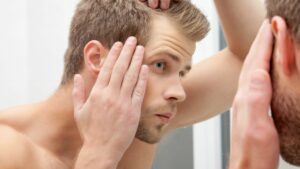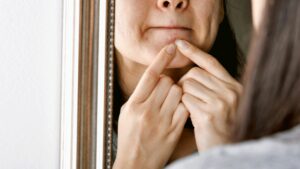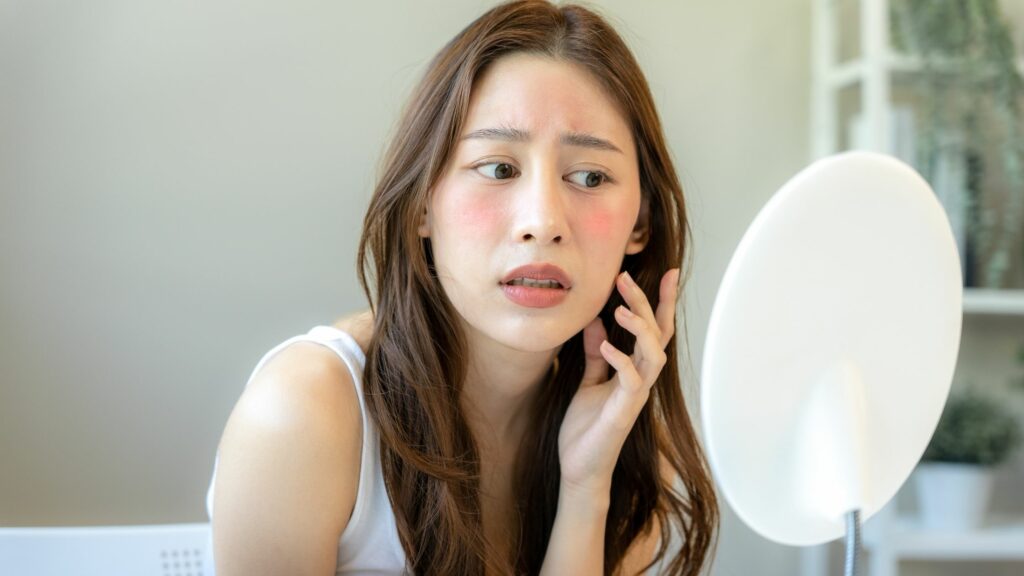Do you often feel like your body is not good enough? Do you obsess over tiny details about your appearance and wish that you could change them? If so, you may be suffering from body dysmorphia. This mental disorder can cause a lot of distress and anxiety, and it is important to get help if you think that you may be affected. In this blog post, we will discuss the different types of body dysmorphia, as well as the signs and symptoms that are associated with it.
Contents
- 1 What Does Body Dysmorphic Disorder Mean?
- 2 Who Gets Body Dysmorphic Disorder?
- 3 What Are The Types of Body Dysmorphic Disorder?
- 4 What Are The Symptoms Of Body Dysmorphic Disorder?
- 5 What Causes Body Dysmorphia Disorder?
- 6 What Are The Effects Of Body Dysmorphic Disorder?
- 7 What Are The Ways To Cope With Body Dysmorphic Disorder?
- 8 Conclusion
What Does Body Dysmorphic Disorder Mean?

Body dysmorphic disorder (BDD) is a mental disorder that causes a person to have a distorted view of their body. People with BDD may think they are too fat, too thin, or have some other physical flaw that makes them look unattractive. This can lead to obsessive behaviors, such as excessive dieting or exercise, and can even lead to suicidal thoughts.
Who Gets Body Dysmorphic Disorder?
Body dysmorphic disorder (BDD) is a mental disorder that causes people to focus on perceived flaws in their appearance. People with BDD may obsess over their skin, hair, weight, or other physical feature. They may worry that they look ugly or deformed. As a result, they may avoid social situations and isolate themselves.
However, BDD most often begins in adolescence or young adulthood. It affects men and women equally. BDD is also more common among people who have relatives with the disorder. Experts believe that genetics and brain chemistry may play a role in its development.
What Are The Types of Body Dysmorphic Disorder?

There are four types of body dysmorphic disorder, according to the Diagnostic and Statistical Manual of Mental Disorders (DSM-V).
Muscle Dysmorphia
This subtype is characterized by a preoccupation with the idea that one’s body is too small or not muscular enough. In this case, the person may work out excessively, use steroids, or have surgery to achieve their desired look. This can lead to injuries, financial problems, and social isolation.
Skin-Picking Disorder
Also known as excoriation disorder, this subtype is characterized by compulsive skin picking that leads to skin lesions and scarring. This is characterized by a preoccupation with perceived blemishes or flaws in one’s skin. The person may pick at their skin, resulting in scars or infections. This can lead to social isolation and anxiety.
Hair-Pulling Disorder
Also called trichotillomania, this subtype is characterized by compulsive hair-pulling that leads to baldness or thinning hair. This subtype is characterized by a preoccupation with the idea that one’s hair is not the right color, texture, or style. The person may dye their hair excessively, wear wigs or hairpieces, or have surgery to correct the perceived flaw. This can lead to different problems such as financial problems and social isolation.
Nail-Biting Disorder
Onychophagia is the medical term for the nail-biting disorder, which is characterized by compulsively biting one’s nails. This can lead to social isolation and embarrassment, as well as damaged nails and teeth.
While these are the four main types of body dysmorphic disorder, it’s important to remember that everyone experiences the condition differently. If you think you may have body dysmorphic disorder, it’s important to reach out to a mental health professional for help.
What Are The Symptoms Of Body Dysmorphic Disorder?

Some symptoms are common in people with Body Dysmorphic Disorder. For example, they may:
The symptoms of body dysmorphic disorder (BDD) can vary from person to person, but usually, involve
Preoccupation With Body Defects Or Flaws
A preoccupation with one or more perceived physical defects or flaws that others often can’t see. For example, a person with BDD may be obsessively fixated on a minor skin blemish, small breast size, or perceived excess body hair.
Excessive Grooming
Excessive grooming behaviors such as hair-pulling, skin-picking, and nail-biting. These behaviors are usually an attempt to “fix” the imaginary defect and relieve anxiety.
Avoidance Of Social Situations
Social avoidance due to embarrassment over the supposed physical flaw. For instance, a person with BDD might miss work or school days or decline invitations to social gatherings.
Comparing Oneself To Others
Constantly comparing oneself to others and feeling inferior. A person with BDD might believe they don’t look as good as people they see in the media or that their friends are more attractive.
Body Dysmorphic Disorder can be a very debilitating mental disorder that can cause a lot of suffering. If you think you might have BDD, it is important to seek help from a mental health professional. With treatment, it is possible to live a full and happy life.
What Causes Body Dysmorphia Disorder?

There is no single known cause of BDD, but there are several risk factors that may contribute to its development. These include:
A History Of Mental Illness In The Family: If you have a parent or other close relative with an anxiety disorder, depression, or obsessive-compulsive disorder (OCD), you may be more likely to develop BDD.
Negative Feedback About Your Appearance: Teasing, bullying, or criticism from others about your appearance can trigger or worsen BDD.
Low Self-Esteem: People with BDD often have very low self-esteem and view their physical flaws as evidence of their inadequacy.
Excessive Exposure To Media Images: The pressure to look perfect that is often seen in the media can contribute to the development of BDD.
So, these are some of the causes that may lead to BDD. If you or someone you know is struggling with this disorder, please reach out for help. There are many resources available to support you on your journey to recovery.
What Are The Effects Of Body Dysmorphic Disorder?
Body dysmorphic disorder can have several effects on those who suffer from it. The most obvious is how it can impact their physical appearance. BDD sufferers often fixate on one or more perceived flaws, spending hours obsessing over them and trying to hide them from the world. This can lead to social isolation, as well as problems at work or school.
Another common effect of body dysmorphic disorder is anxiety. Sufferers may experience severe anxiety about their appearance, to the point where they avoid social situations altogether. This can make it difficult to maintain relationships and may even lead to depression. BDD can also cause physical symptoms, such as headaches, stomachaches, and fatigue.
So, if you or someone you know is struggling with body dysmorphic disorder, it’s important to seek professional help. BDD is a treatable condition, but without treatment, it can have a lasting impact on a person’s life. If you think you may be suffering from BDD, please talk to your doctor or contact a mental health professional.
What Are The Ways To Cope With Body Dysmorphic Disorder?

There are some ways that people with body dysmorphic disorder can cope with the condition:
Cognitive-Behaviour Therapy
Cognitive-behavioral therapy is one type of therapy that can be helpful for people with body dysmorphic disorder. This type of therapy can help people change the way they think about their bodies and themselves. It can also help them learn how to cope with their symptoms healthily. If you or someone you know has body dysmorphic disorder, there are resources available to help.
Medications
In some cases, medications can be used to help treat body dysmorphic disorder. Medications can help reduce the symptoms of anxiety and depression, which are often associated with the condition. If you or someone you know has body dysmorphic disorder, talk to a doctor about what treatment options are available.
Support Groups
There are also support groups specifically for people with body dysmorphic disorder where members can share their experiences and offer support to one another.
Self-Care
Taking care of oneself both physically and emotionally is important for people with body dysmorphic disorder. This includes things like getting enough sleep, eating a balanced diet, and getting regular exercise.
so, if you or someone you know is struggling with body dysmorphic disorder, know that some resources and people can help. treatment options are available, and no one has to suffer from this condition alone.
Conclusion
In conclusion, there are three types of body dysmorphic disorder: primary, secondary, and somatoform. Each type has different causes and treatment options. If you think you may have BDD, please reach out to a mental health professional for help.
If you are looking for affordable Online OCD Counseling MantraCare can help: Book a trial OCD therapy session


